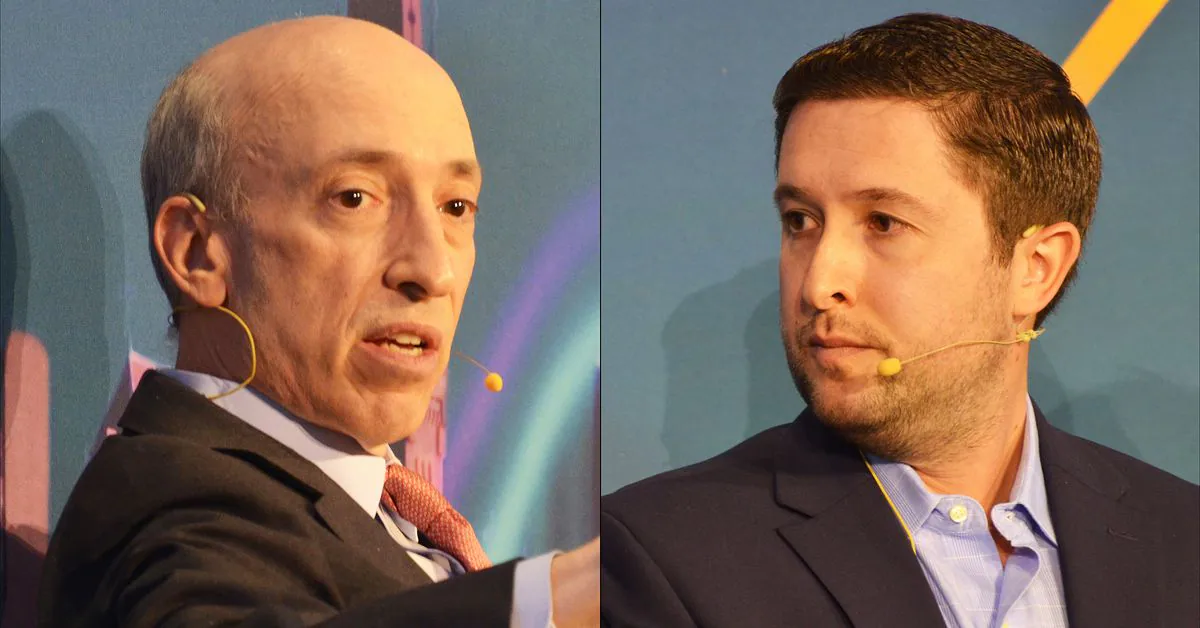How to simply understand the scalability new solution Plasma + ZK-SNARKs?
An Easy Guide to Understanding the Scalability Solution Plasma + ZK-SNARKs
Produced by: DODO Research
Author: dt X 0xNing0x
Editor: Lisa
- Why has Blast become the biggest catfish of Layer2 this year, with over $200 million TVL captured in just 2 days?
- Bitcoin Ecological Entrepreneurship Season Which Emerging Projects are Worth Paying Attention to?
- Bankless Binance lost, Crypto won
NingNing (Twitter: @0xNing0x) is a senior researcher at EMC Fund. Motto: Everything is a sine wave.
Last week, Ethereum founder Vitalik (hereinafter referred to as V God) published his latest article “Exit games for EVM validiums: the return of Plasma” on Twitter, focusing on the introduction of Plasma scaling technology and intentionally guiding the current marginalized Plasma scaling solution to be combined with ZK zero-knowledge proofs. This article caused many projects related to Plasma technology to soar, allowing this technology, which had gradually faded from everyone’s sight and been replaced by Rollup, to return to the competition of Ethereum’s scaling track.
This week’s CryptoSnap allows DODO Research X NingNing (@0xNing0x) to explain Plasma in the simplest and most understandable way and to clarify what V God’s latest article expresses!
What is Plasma?
Scaling has always been a key research project for developers in the blockchain world. In order to achieve the goal of a decentralized world computer and build a cheap and fast blockchain, various scaling solutions have emerged around the Ethereum mainnet. Plasma was once the mainstream scaling solution for Ethereum.
Plasma can be understood as building a chain on the Ethereum mainnet, controlling the interaction of funds between the mainnet and the Plasma chain through smart contracts. Unlike sidechains (BNB Chain, Gnosis Chain), Plasma chains need to periodically return the final state on the chain to the Ethereum mainnet, and unlike Rollup technology, Plasma chains do not return the entire chain of transaction data, but only the root of the Merkle tree, which is the state on the Plasma chain.

Source: https://learnblockchain.cn/2018/10/20/plasma-framework
Exit Game: A Secure “Exit Game” Mechanism
Since computation does not take place on the mainnet, Plasma chains can greatly enhance the scalability of the entire network and have relatively secure verification mechanisms to prevent malicious actors. Speaking of security, we have to mention the “Exit game” mechanism mentioned in V God’s title, which is the secure “exit game” mechanism of Plasma chains.
In the design of the Plasma framework, security is protected by its exit mechanism. When users want to return to the mainnet or believe that the Plasma chain has been attacked, they can propose an “exit” to the Plasma contract on the mainnet and provide proof. If there are no challengers to challenge the “exit” during the seven-day challenge period, the assets can be successfully retrieved on the mainnet. On the other hand, if the “exit” is successfully challenged, the “exit” fails, and malicious users need to bear the corresponding penalties.
The three common types of attacks are as follows:
- Immediate exit after sending a transaction (Not latest owner): This attack refers to when a user exits their assets immediately after sending a transfer transaction within the challenge period. This is invalid because the latest asset owner should be the recipient of the transaction. The network can challenge this exit and prove that the asset has been transferred to someone else.
- Double spend attack: A double spend attack refers to the illegal spending of the same asset twice or more. For example, Alice transfers 1 token to Bob, and then Alice transfers the same token to Charlie. The network can detect that the token has been double spent and challenge the illegal transfer.
- Invalid transaction history: This indicates the detection of illegal state transitions in the asset transaction history. For example, there are unspent transaction outputs that have not been consumed. Users can respond to this challenge by providing corresponding proof of consumption.
Plasma Cash
Following that, Vitalik introduced the project Plasma Cash in this article. In Plasma Cash, each token deposited by users is treated as a non-fungible token (NFT). Each NFT has a transaction history recorded in the form of a Merkle tree. However, due to the non-divisibility and uniqueness of NFTs, the use cases of Plasma Cash are limited to specific transfer purposes. This led to an improved version using the UTXO model, which solves the problem of non-divisibility in the original NFT transfer design of Plasma Cash. It helps in the development of the field of recurring payments but also makes it difficult to interact with smart contracts.

Source: https://vitalik.ca/general/2023/11/14/neoplasma.html
Plasma Technology Bottleneck
The current technological bottleneck of Plasma is the difficulty in implementing the Ethereum Virtual Machine (EVM). Many state objects in EVM contracts do not have clear “owners,” which contradicts Plasma’s security model. The Plasma exit mechanism requires every state object to have a clear owner who is responsible for monitoring the data and initiating an exit when necessary to protect the assets. However, in EVM contracts, many state objects do not have clear owners, such as liquidity pools in Uniswap or MakerDAO CDP positions. In such cases, the following situations may occur if the Plasma chain encounters issues:
- No owner to initiate a state exit, and the state may be permanently locked on the Plasma chain.
- Even if external parties can initiate exits, Exit Game attacks are highly likely, posing significant risks.
- Complex contract states are difficult to verify.
Plasma + ZK-SNARKs
In response to the current technological bottleneck of Plasma, Vitalik suggests that combining the mature zero-knowledge proof (zk-SNARKs) technology can effectively address some of the bottlenecks. This can be divided into the following five points:
- Zk-SNARKs can prove the validity of Plasma blocks on the main chain, reducing reliance on exit mechanisms.
- Immediate withdrawal of assets on the Plasma chain can be achieved, eliminating the seven-day fraud-proof challenge period and reducing issues with chain reorganizations.
- A parallel UTXO structure representing the EVM state can be constructed, and its equivalence can be proven using zk-SNARKs, bypassing some of the issues with the EVM.
- By using zk-SNARKs, the amount of state data that users need to verify and store will be significantly reduced, optimizing the user experience.
- For smart contracts with difficult-to-define owners, if the critical parts can be divided into verifiable objects, partial security guarantees can still be obtained.
Although these methods still cannot cover all complex EVM contracts, with the further development of ZK technology and ongoing exploration of the Plasma design space, we look forward to finding new solutions that strike a better balance between security, scalability, and user experience.
Author’s Opinion
DT @19971122:
Before reading Vitalik Buterin’s article, the author was not familiar with the technical architecture of Plasma. After all, the current Ethereum scaling solutions are almost dominated by Rollup technology. Various teams are rushing to introduce L2 networks based on Rollup technology. They have also developed modular architectures for constructing the data availability layer (DA layer) on other networks (Celestia, EigenLayer, and Avail). This has led to statements like the one Dankrad Feist, a researcher at the Ethereum Foundation, made on Twitter: “A modular blockchain that does not use ETH as the DA layer is not Rollup, nor is it Ethereum L2.” The question of who represents the orthodoxy of Ethereum’s development has always been a topic of heated debate. Just as discussions about the development of Rollup are intensifying, Vitalik’s article injects new energy into Plasma and tells the Ethereum community that there is not only one scaling solution for Ethereum, but ZK+Plasma could also be an option.
The author believes that in the decentralized world, diversification is a natural process. However, when considering capital efficiency, the development of modular and homogeneous solutions seems more economical. This has led to the emergence of standardized frameworks like OP Stack and Polygon zkEVM CDK, which allow different parties to build their own L2 networks. But this also means losing some diversity. Vitalik’s move may be seen as a directional guidance, suggesting that the development of Ethereum’s scaling solutions has lost balance. Whether there will be teams stepping up to implement this new direction is something worth tracking. As a long-time user and advocate of Ethereum, the author is pleased to see the balanced development of Ethereum’s scaling technology.
NingNing @0xNing0x:
Plasma is a solution aimed at improving blockchain scalability by moving most of the data and computations off-chain. It first appeared in 2017 and has gone through multiple iterations, including Plasma Cash, Plasma Cashflow, and others. However, due to the inherent limitations of Plasma when expanding beyond payment use cases (such as the problem of unclaimed states and incentive flow issues), Plasma L2 solutions have gradually become marginalized.
Meanwhile, Rollup has become the mainstream L2 solution, with its main advantages being simplicity and developer-friendliness. However, with the implementation and maturity of ZkEVM technology, Plasma has found new design space, offering new possibilities for simplifying the developer experience and protecting user assets.
Vitalik’s endorsement of Plasma L2 this time may be to emphasize the importance of the diversification and innovation of the L2 paradigm, rather than to challenge the mainstream status of Rollup L2 solutions. Currently, Rollup L2 solutions are in an absolute leading position in terms of TVL scale and user base, and this position will be further strengthened in the foreseeable future due to the Matthew effect.
In the past two days, the L2 Blast, a new paradigm launched by the collaboration between LianGuaridigm and Blur teams, has shown another exploratory path. Although its architecture does not conform to Vitalik’s strict definition of L2, it has achieved considerable success in the market and community, quickly attracting community attention and a significant amount of funds. This indicates that the market and community are eager for diversity in L2 paradigms and are no longer satisfied with only one or two standard designs.
In conclusion, Plasma L2 solutions have certain potential and innovation, but the development of L2 should not rely on a blueprint designed by a top-level designer with supreme rationality, but should grow out of complex and nonlinear market competition.
We will continue to update Blocking; if you have any questions or suggestions, please contact us!
Was this article helpful?
93 out of 132 found this helpful
Related articles
- Opinion Participating in L2 network Blast is a short-term speculative behavior with insufficient long-term appeal.
- From entering the market by selling houses to being forced out, reviewing CZ’s 6-year entrepreneurial history
- LianGuai Daily | Sam Altman to return to OpenAI as CEO; HTX and Heco cross-chain bridge under hacker attack
- Sending money and interest, how to play the new L2 Blast launched by the founder of Blur?
- A whopping $4.3 billion fine or will it force Binance to dump and sell coins? The newly appointed CEO boldly claims to have strong revenue and profits.
- After a rise of 120%, will there be a new momentum? Three charts explain the logic behind the Bitcoin bull market.
- How do lawyers view the $4.3 billion settlement case of Binance?






